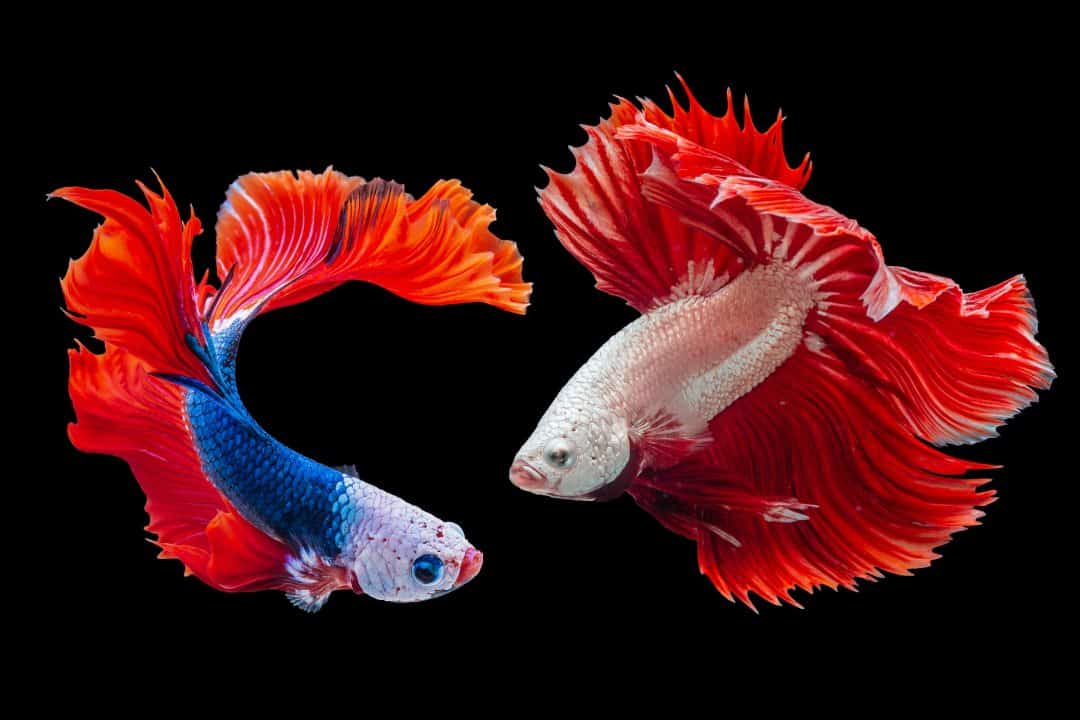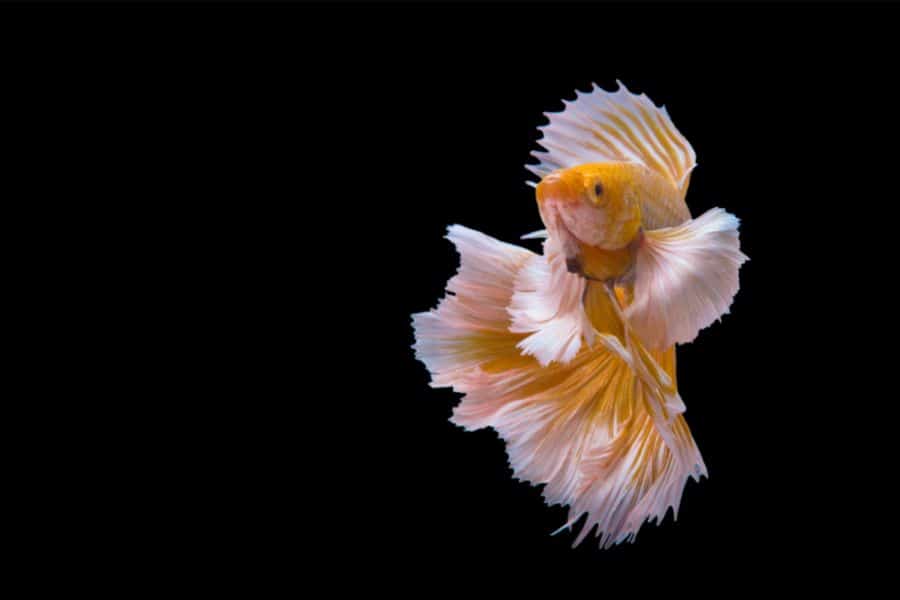Betta fish are among the most attractive freshwater species due to their bright colors and spectacular tails.
Spotting the differences between various kinds of betta fish might be difficult for beginners. Bettas come in a wide range of tail styles, color combinations, and patterns.
Continue reading if you have no idea about what kinds of betta fish exist. Experts can also tell their health issues, personalities, and much more by their physical differences. Even with many differences, these bettas look spectacular in tanks.
Types of Betta Tails
Bettas have a beautiful tail, which will catch your attention right away. Their tails differ from each other in color and style.
Besides their appearance, understanding different tail styles are essential. It would also provide you with in-depth detail about the species, along with its genes. With this, you’ll also be aware of how much attention and care it will require.
1. Veiltail
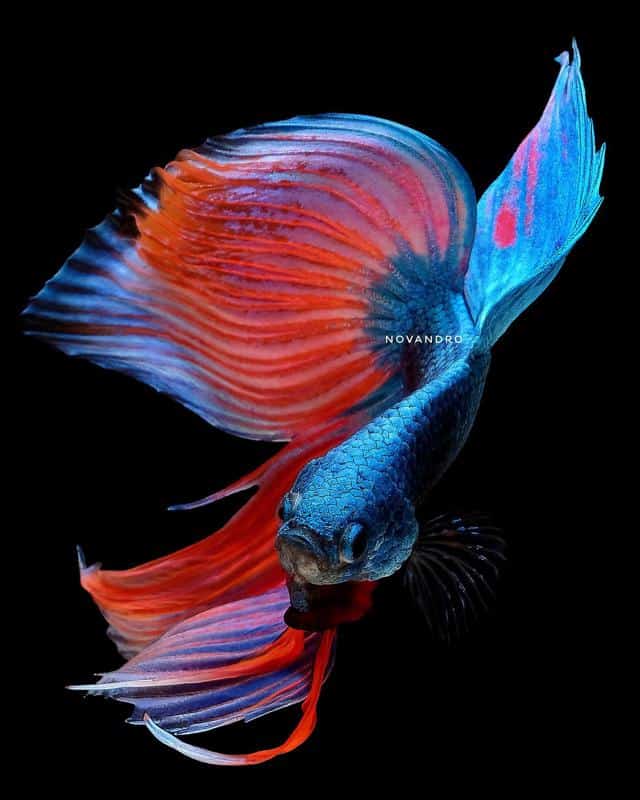
- Species Name: Betta splendens
- Care Level: Moderate
- Temperament: Peaceful, could be aggressive sometimes
- Life Expectancy: 2–4 years
- Size: 1.5–2 inches
- Diet: Carnivore
The veiltail is perhaps the most prevalent tail style among betta fish. It features a long, wavy tail that curves straight down. The term originates from its glittery and colorless tail, which resembles veil-like when it swims in full motion.
It makes a fantastic option for newbies as it is readily available and requires less care and attention. These species are attractive, fertile, and usually fit and active, yet when they are stressed, they might nibble at their gills. As with other bettas, they are susceptible to unhygienic environmental quality, so ensure to maintain their surroundings fresh and sanitary.
It would also be a great idea to select lights that are not too intense because veil tails could be skeptical and experience anxiety in an aquarium with powerful artificial light. In comparison to male veiltail fishes, females have softer coloration and smaller fins.
2. Crowntail
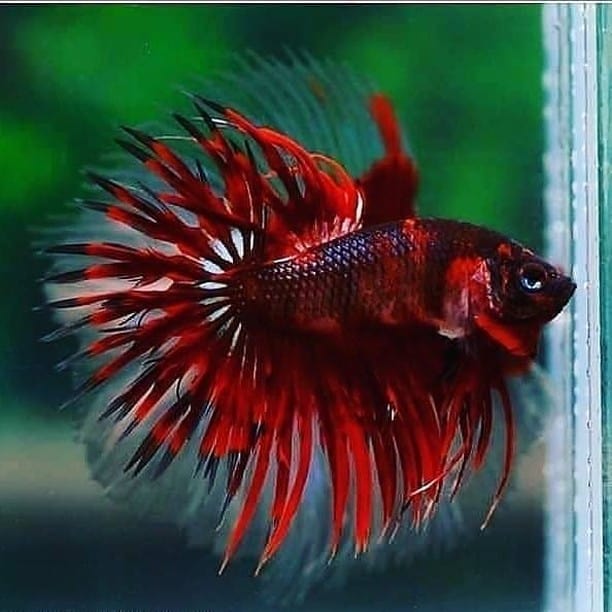
- Species Name: B. splendens
- Care Level: Moderate
- Temperament: Aggressive
- Life Expectancy: 2–3 years
- Size: 3 inches
- Diet: Carnivore
The term “crowntail betta” refers to the dorsal fin of the fish, which resembles a crown. Although the size of these peaks might vary, they shouldn’t rule off more than 2/3 of the way along the size of the tail.
Crowntail bettas need a fair amount of attention than some other species of bettas due to their complex limbs and peaks on their dorsal. It is necessary to ensure that the aquarium is free from pointed things that might hook on the tail, and you should also use precautions when rinsing the aquarium.
The crown tail is susceptible to shattering the edges of their wings, and sometimes females especially with small tails could have a twisted dorsal fin. But aside from that, crowntails are often strong and fruitful. Additionally, because their tails have less weaving than those of other fish, they rarely nibble at their dorsal fins.
If you’re thinking about getting a crowntail betta, experts advise picking the one with dazzling colors. Every time somebody observes your fish, they will be struck by the stunning combination of the colored torso and the white fins.
3. Combtail
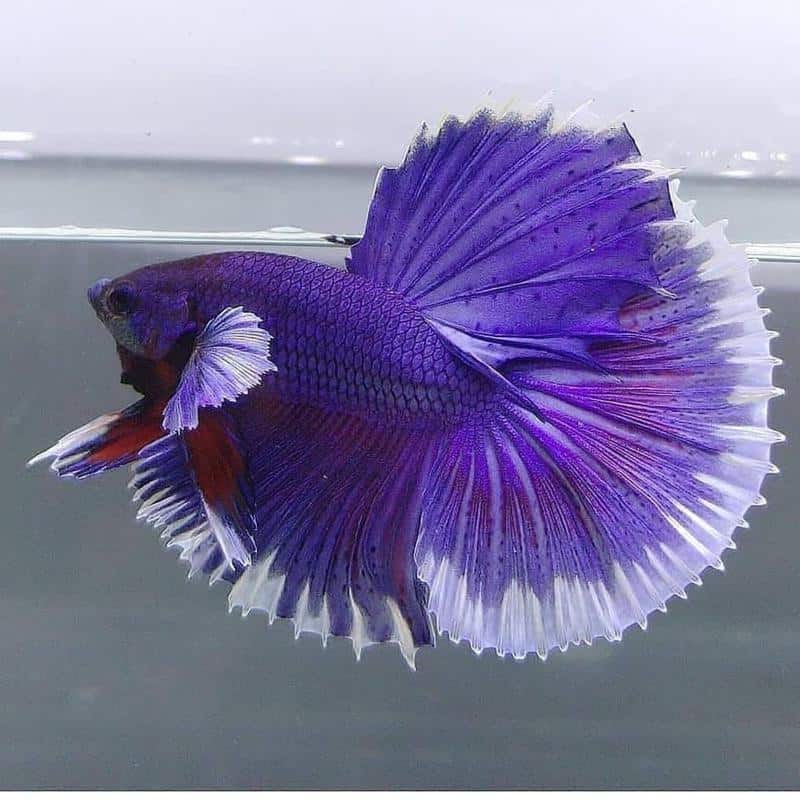
- Species Name: B. splendens
- Care Level: Difficult
- Temperament: Agressive
- Life Expectancy: 3 years
- Size: 3 inches
- Diet: Omnivore
Combtails, commonly known as half-sun betta species, are a more recent kind. The combtail seems to have a gap between every blade rather than matting that wraps around it from blade to blade. The dorsal fin resembles a wide-toothed brush as a result of this.
Even though this type often bears fruit and is in good shape, the dorsal fin can occasionally experience support problems. Many combtails get floppy tails, which doesn’t seem appealing. Although there is no health risk, this could give your pet a sad face.
It’s not difficult to look after your comb tail fish; however, you must be cautious not to harm their gills. Ensure that such beautiful species are kept alone or with aquarium buddies who won’t nibble at their dorsal fins.
Comb tails get along well with ghost shrimp as well as Corydoras catfish, but you need to check that the shrimp species are bigger than your betta’s mouth so they can’t swallow them.
4. Double Tail
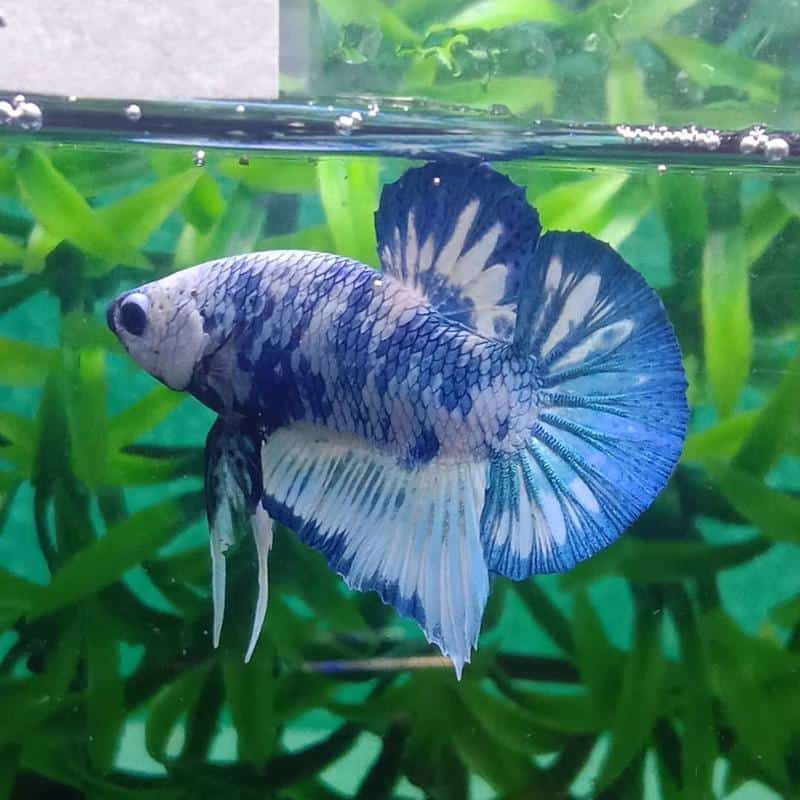
- Species Name: Betta splendens
- Care Level: Moderate
- Temperament: Aggressive
- Life Expectancy: 2-3 years
- Size: 2-3 inches
- Diet: Insects, shrimp, fish flakes, pellets
The double tail often referred to as a twin tail betta, features broad and extended anal, ventral, and rear frills. Their names derive from the dorsal fin’s appearance as two distinct spines.
They might be categorized as a rare kind since they are spectacular, unique, and endangered. These are often available in a broad range of colors and textures.
Fish with double tails have undergone a mutation that negatively affects their health. They usually experience swim bowel issues, which makes them vulnerable to tail rot as well as other disorders of the tail. Despite being magnificent bettas, they often don’t survive long compared to other species.
Double-tail betta fish are costly as compared to most betta types. It is due to their uniqueness and attractiveness. The fact that these species were successfully bred by a small number of expert breeders makes them a highly valuable betta.
5. Spadetail
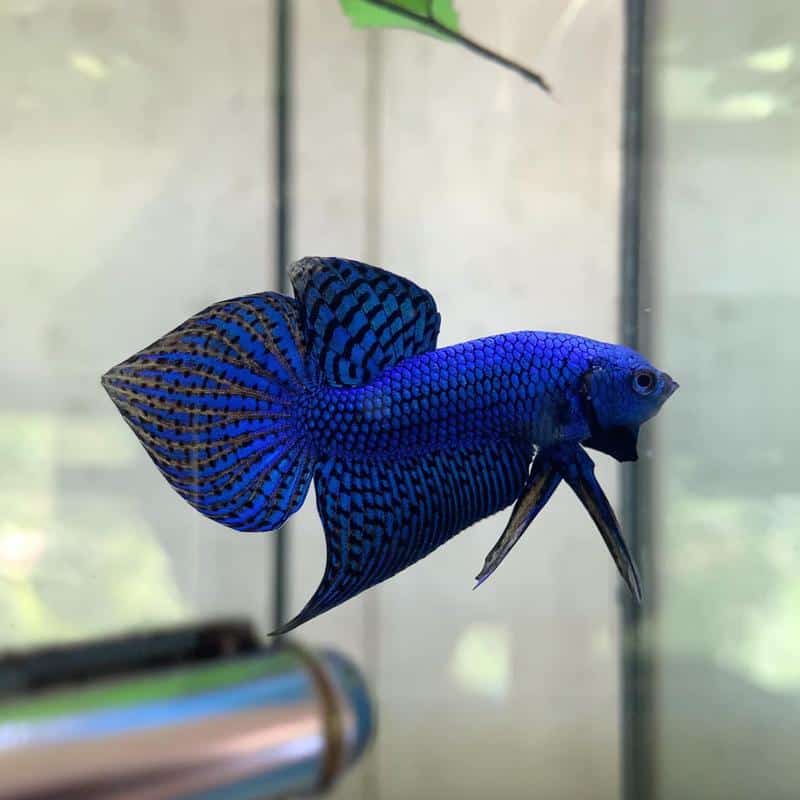
- Species Name: Betta splendens
- Care Level: Difficult
- Temperament: Peaceful
- Life Expectancy: 2-4 years
- Size: 1.5-2 inches
- Diet: Carnivore
This bettas title comes from its spade-shaped caudal tail. Its tip has a broad bottom that gradually gets smaller.
Although it seems to have a similar appearance to a round-tailed betta, the caudal spine is pointed rather than spherical. These come in a huge variety of color combinations and styles as well. They are usually strong species with no specific or unusual health issues other than the common betta issues.
Due to their exceptional survivability, spadetail fish are a good option for inexperienced aquarists. If you maintain their aquarium spotless and give them lots of hidden passageways, you can easily have them as a pet. These species have a unique personality and are not as attractive as other bettas.
6. Halfmoon
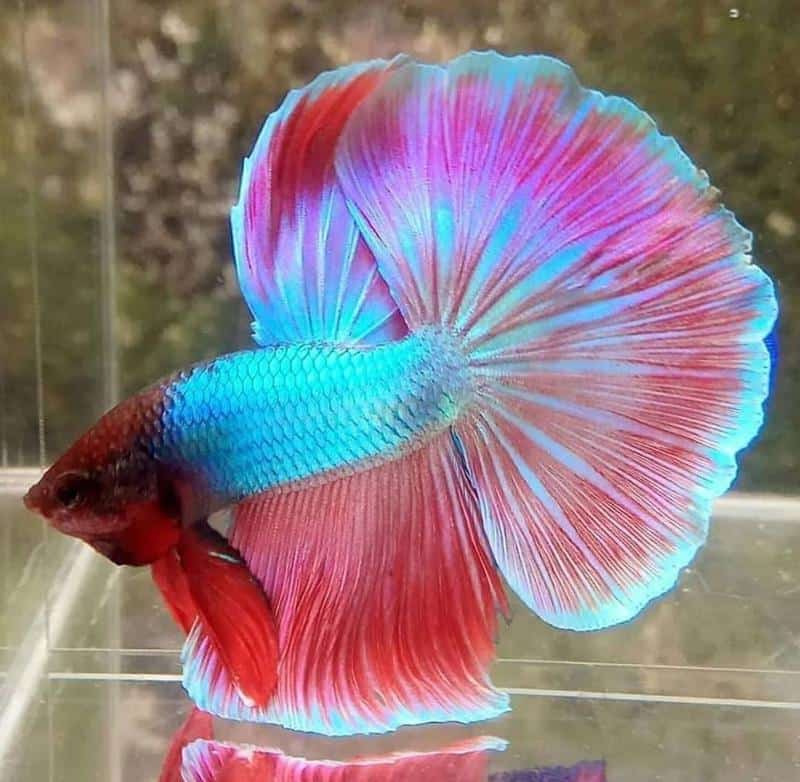
- Species Name: Macropodusinae
- Care Level: Beginner
- Temperament: Active
- Life Expectancy: 2-4 years
- Size: 1-3 inches
- Diet: Flakes, pellets, brine shrimp
The Halfmoon betta’s tail can generously be extended out by around 180 degrees. It has a tail that resembles the uppercase D. Apart from having a large caudal tail, a half-moon possesses broader anterior and ventral fins than other freshwater bettas.
Given how much fun it is to observe half-moon bettas dive, they are among the most well-known species to have in your tank. Although they may appear fragile, these species are actually incredibly strong.
You can find a lot of them in fish shops and pet shops. Although they are susceptible to common betta health disorders, they are overall strong, active, and fit species.
7. Over Halfmoon
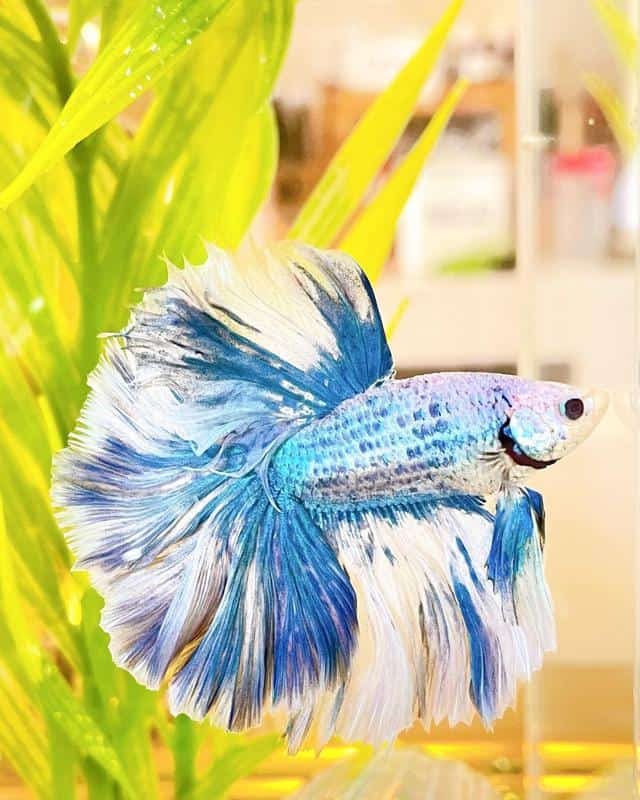
- Species Name: Macropodusinae
- Care Level: Difficult
- Temperament: Highly Aggressive
- Life Expectancy: 2 years
- Size: 1.5-3 inches
- Diet: Bloodworms and live brine shrimp
The tails of over Halfmoon betta species are identical to those of Halfmoon fish. The caudal tails differ from other fins because they have the ability to fan out more than 180 degrees while they are fully flared, giving them a more than half-circle appearance.
If you’re considering getting a Halfmoon for your tank, be careful that they are sometimes very violent than other species. Be careful while selecting your tank buddies to prevent aggressive behavior.
To prevent violent behavior, always keep one male betta in your tank. Nevertheless, their behavior won’t be negatively impacted by introducing a female betta.
8. Delta

- Species Name: Betta splendens
- Care Level: Moderate
- Temperament: Aggressive
- Life Expectancy: 2-4 years
- Size: 1.5-3 inches
- Diet: Carnivore
A betta’s delta tail begins to narrow down along the body but becomes broad going down its end. Its tail is in a triangular form, which is identical to the capital letter D in the Greek language.
Its appearance is nearly identical to that of a half-moon; however, one significant distinction is that its tip is shorter and cannot turn 180 degrees.
You can easily discover a Delta that complements your personality because they are available in a broad variety of colors and designs. This species is very strong, active, healthy, and does not have fin rotting issues like other bettas.
We advise selecting a species with dramatic tails and vibrant markings if you’re interested in a delta fish.
9. Super Delta
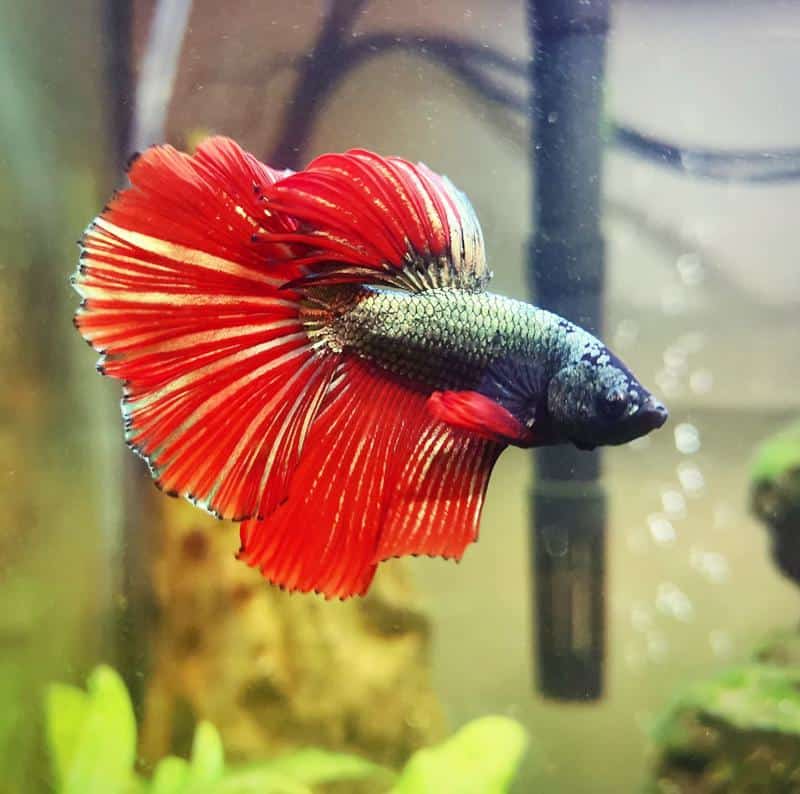
- Species Name: Betta splendens
- Care Level: Easy
- Temperament: Peaceful
- Life Expectancy: 2-4 years
- Size: 1-2.5 inches
- Diet: Carnivore
A delta fish and a super delta share a lot of similarities. Super deltas have an extended tail that ranges in angle from 120 to 160 degrees, which is the primary distinction. Half-moon bettas are those in which the fin extends to 180 degrees.
Another feature that distinguishes a super delta is the absence of crowning or weaving on its strokes. Although there is webbing around the tail’s margins, they don’t appear sharp. It provides the super delta with a sleek appearance that many viewers believe to be quite attractive.
Although many fish have striking color combinations across several tail styles, but most of the combinations are not compatible with every tail style.
Super delta fins are usually regarded as highly attractive and are a good option for both novice and professional betta keepers. We advise selecting a species with soft colors if you’re seeking a betta having a strong delta fin.
The ideal color choices for super deltas are bright tones such as white, yellow, or pastel pink because dark tones can sometimes appear dull.
10. Half Sun
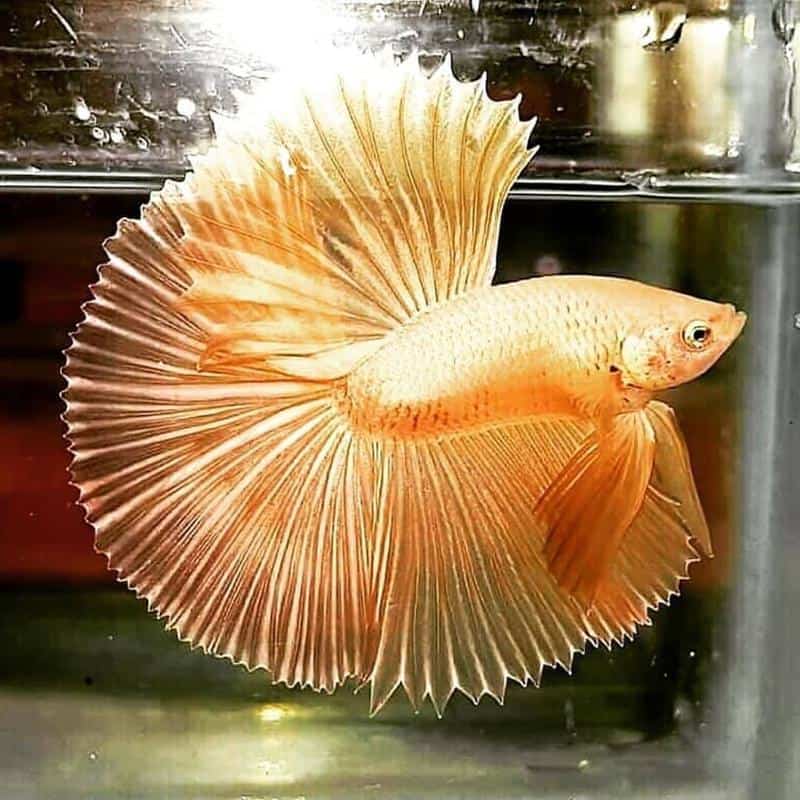
- Species Name: Betta splendens
- Care Level: Difficult
- Temperament: Territorial
- Life Expectancy: 2-3 years
- Size: 2-3 inches
- Diet: Carnivore
Crown tail and Halfmoon fish were selectively bred to create the half sun fish. It features a half-moon-shaped tail with a 180-degree span and an expanded caudal pad weaving the same as the crowned tail.
Siamese battle species with a half-sun pattern could be violent despite their beauty. Be careful when choosing different betta species to include in the aquarium.
11. Rose Tail
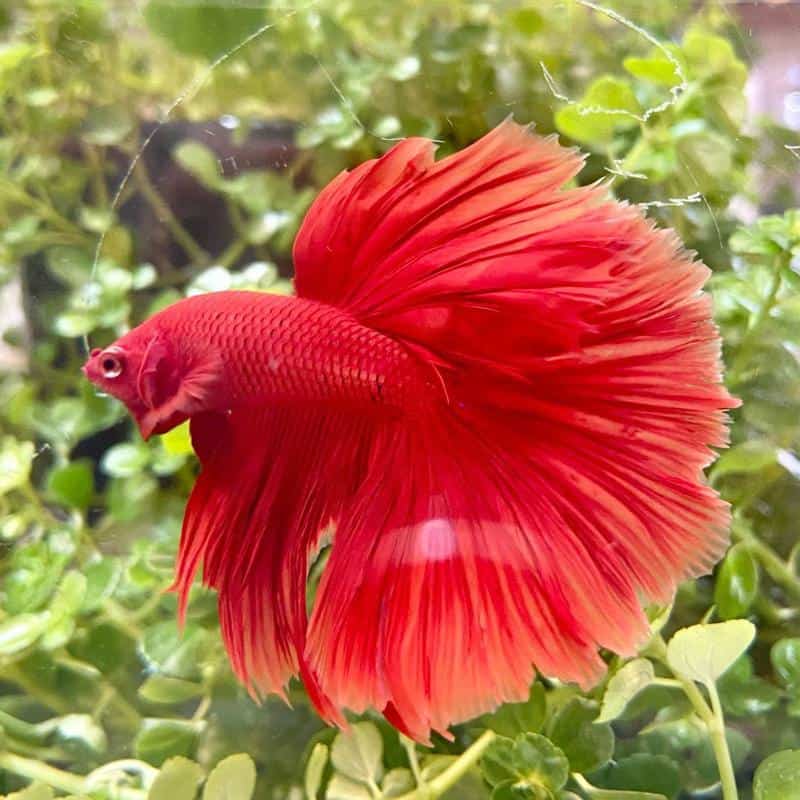
- Species Name: Betta splendens
- Care Level: Moderate
- Temperament: Semi-aggressive
- Life Expectancy: 2-5 years
- Size: 1-2.5 inches
- Diet: Carnivore
A rosetail fish is a gorgeous half-moon mutation. However, its dorsal fin has considerable sprouting on the edges of the gills, which is the most noticeable feature. In the end, it causes an overlapping, giving the dorsal fin a rose-like appearance.
Although the rose-shaped tip is often attractive, it does have one drawback – it is bulky. The fish may find it challenging to navigate, as a result, particularly as it gets mature and bulkier. However, introducing this fish to your tank would unquestionably brighten the decor.
The disadvantage of this species is that it can be prone to illness. This betta can nip its dorsal fin when stressed. As a result of their extensive breeding for such showy fins, they are more likely to have cancers and swim bowel problems.
It is not advised for inexperienced fish owners to have rosetails since they are regarded among the most demanding tail species to look after for. These heavy tails may shred easily as well as their fins are extremely sensitive.
Therefore, rosetail betta fish need thorough tank maintenance and a great deal of tolerance. However, these species are absolutely worthy if you’re prepared to put in the effort!
12. Feather Tail
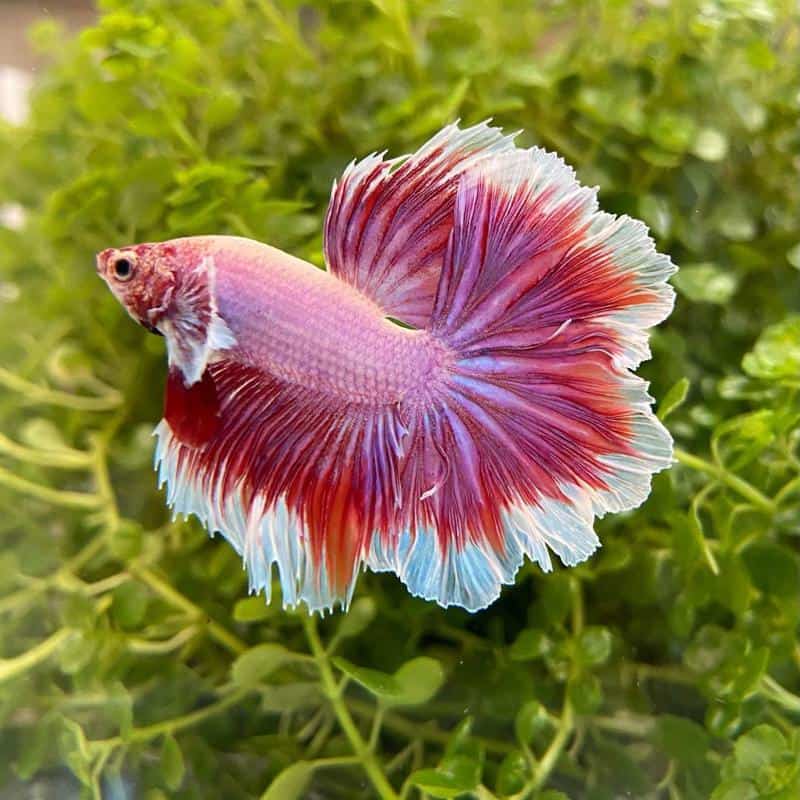
- Species Name: Betta splendens
- Care Level: Difficult
- Temperament: Fearful
- Life Expectancy: 2-3 years
- Size: 1.5-2 inches
- Diet: Carnivore
The feather tail betta features ruffled anal, ventral, and spinal frills. It resembles the rose tail betta fish, but the feathertail gives the impression that it has somehow lost control. Additionally, it resembles a hybrid of a rose tail with a crown tail.
It ranks among the most beautiful varieties of betta fish. The tail of this species resembles feathers when it swims passionately, leaving behind a beautiful trail.
The feathertail has similar medical issues as the rosetail. Both of them have swim bowel disorders and fin nibbling problems.
Due to the heaviness of their fins, these species may struggle to swim as compared to other betta fish. Therefore, you must choose a filtration system and pump that produces a mild flow in contrast to a powerful stream.
You must also be extremely cautious while scrubbing the aquarium since feathertails are much more prone to fin injury.
13. Plakat/Shortfin
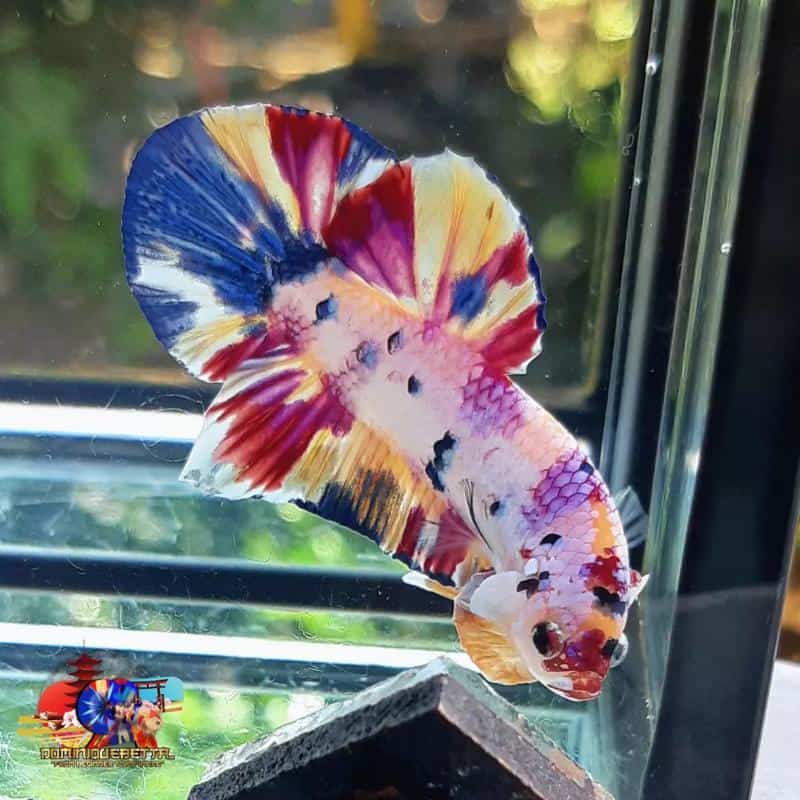
- Species Name: Betta splendens
- Care Level: Easy
- Temperament: Aggressive
- Life Expectancy: 3-5 years
- Size: 2-3 inches
- Diet: Carnivore
If you’re seeking little betta fish, the plakat seems to be a fantastic choice. Plakat fish are often referred to as shortfin freshwater fish and have tails that are considerably smaller than their long-finned cousins.
Plakat fish need extra room to swim since they are a little more energetic than some other betta species. The standard size for a fish aquarium is 10 gallons; however, if you wish to maintain several fish, you should consider switching to a 20-gallon aquarium.
Due to their history of aggression, it is recommended to maintain these fish away from other aquarium species.
14. Dumbo Ear/Elephant Ear
- Species Name: Betta splendens
- Care Level: Low
- Temperament: Aggressive
- Life Expectancy: 1 year
- Size: 2.5 inches
- Diet: Mosquito larvae, brine shrimp, bloodworms
Although these species are not technically a tail variety, Dumbo ear bettas earn a position in this category due to their stunning physical features. It possesses elephant-ear-like, extra-large tail feathers.
It could be pretty aggressive despite having some of the most stunning feather styles among betta fish. Choose your tank buddies carefully since the huge fins might startle other fish.
Elephant ear bettas possess broad and large tail feathers that give the impression that they have enormous ears which act like wings that could make them fly on the water.
However, their tails are generally shorter. Elephant ear fish is the only kind of betta fish whose caretakers seem to choose females rather than males.
Males often have a dull appearance as they lack the intricate tail feathers that are typical in all other species (apart from the plakat fish). But the females are very noticeable because of their protruding pectorals. It is a fantastic choice if you want a gorgeous female betta in your aquarium.
Types of Betta Colors
Based on various species, Siamese battle fish or Freshwater Bettas come in a variety of colors. Both the tail and the body of the fish exhibit these different shades.
A betta fish chromatophore is the organelles that produce color in smaller vertebrates and has mainly three colors. These colors are yellow, black, and red. If you look up the betta species list, you’ll notice that they represent among the most prevalent colors.
Those colors combine to create a range of betta colors.
1. Blue Betta
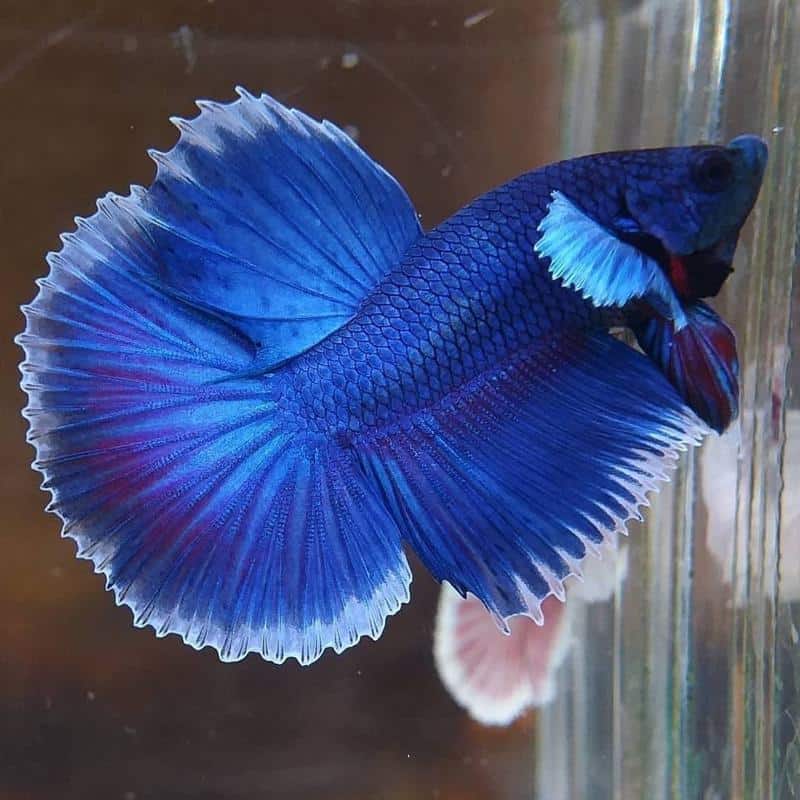
Blue is a prominent pigment among bettas. True blue is often referred to as blue wash. It’s one of the most common and easily accessible colors. Additionally, there are different colors available, like grey steel blue.
If you prefer a fish that is a little bit colorful, get a royal blue betta with sparkling colors. But, it might be challenging to obtain this colorful betta.
2. Black Orchid Betta
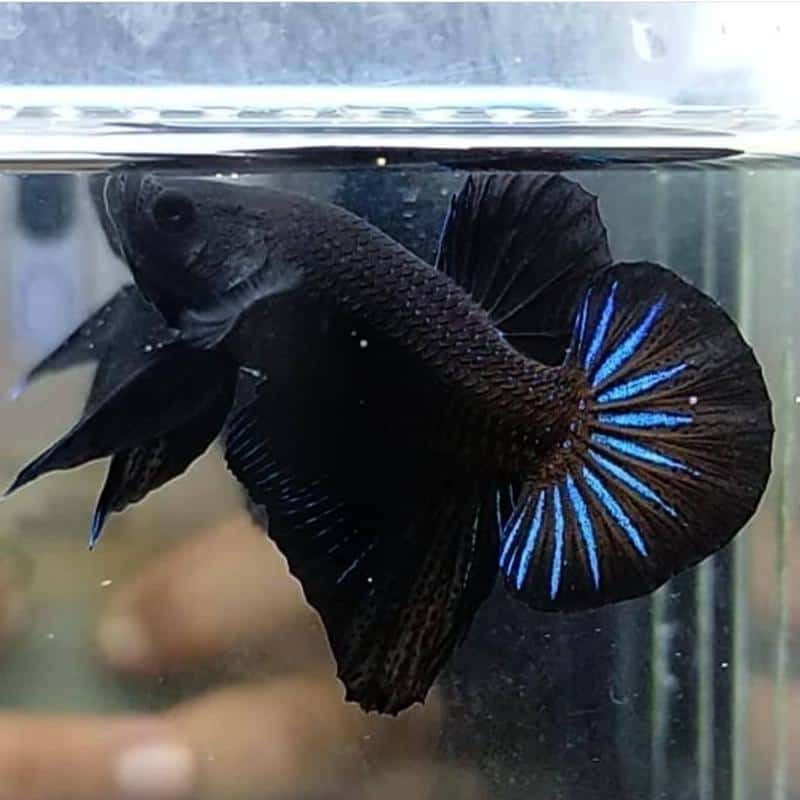
Bettas are recognized for their vibrant colors. A black orchid would be an excellent choice for people who want something both sophisticated and classy.
This type of Japanese battle betta features black markings on its tail and whole body. Along the scales, there are intense blue highlights that provide a stunning appearance to the fish’s black body.
3. Red Betta
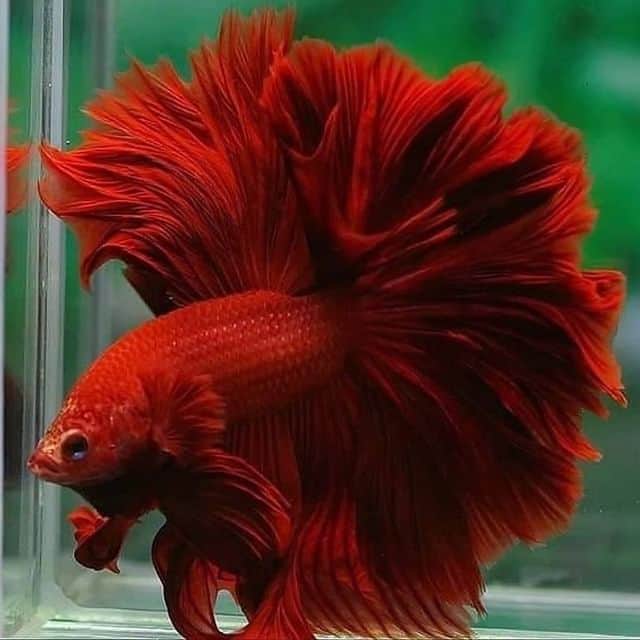
Red is perhaps the most dominating color among the many betta species. It possesses a gorgeous and uniform color that provides a beautiful tint when it wanders in a tank.
A red betta is often brightly colored. If it appears faded, there may be a problem with the tank water’s condition. Examine the water’s pH level, temperature, and other variables.
4. White Betta
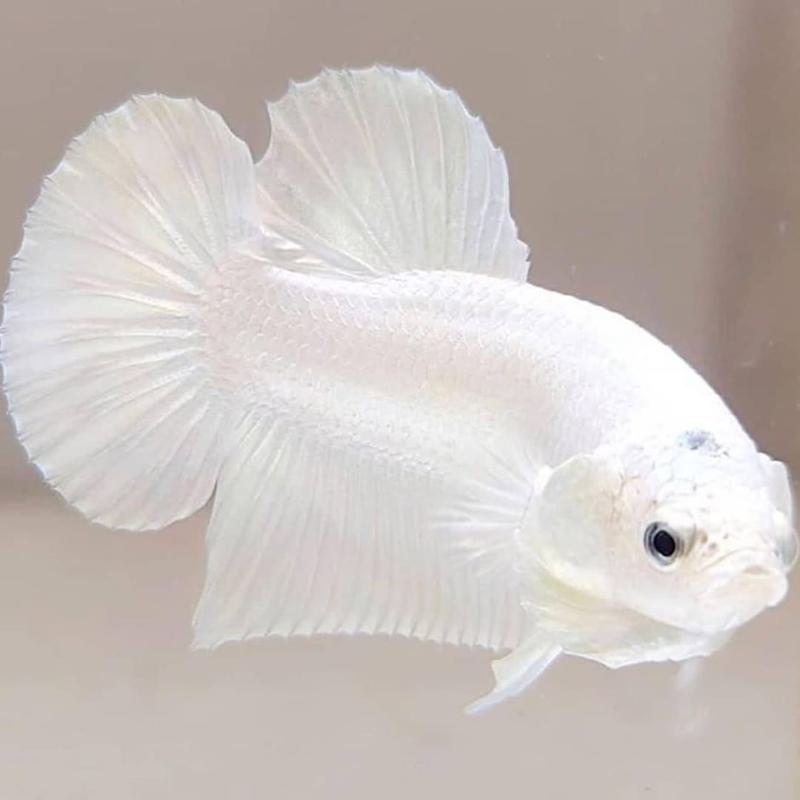
White bettas could be dull and lifeless to some fish keepers. Even though they lack vibrancy, white betta species have unique tails that are absolutely stunning. Their swirling tails would provide a splash of color to any home aquarium.
When paired with some other colored species, white betta color will pop. Consider deeper colors, such as red, blue, or black.
5. Yellow Betta
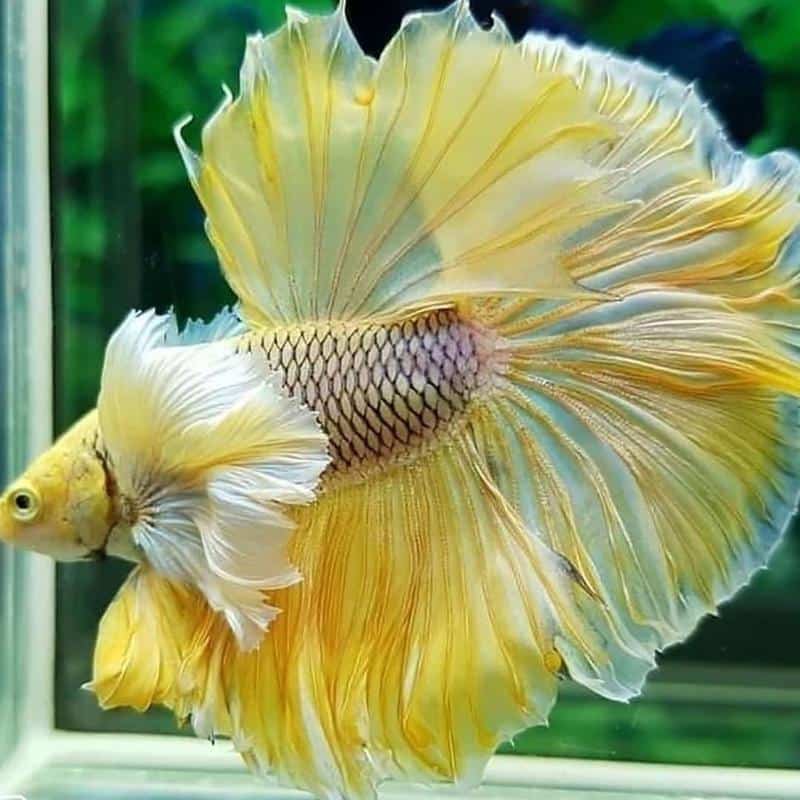
There are several varieties of yellow-bodied betta fish, ranging from bright sun rays to mild butterscotch. Its vibrant color is visible on the tail, dorsal fins, and body.
When selecting this shade, the majority of merchants would describe yellow betta as non-red color. They have many similarities; however, the main difference is their lack of red color.
6. Green Betta
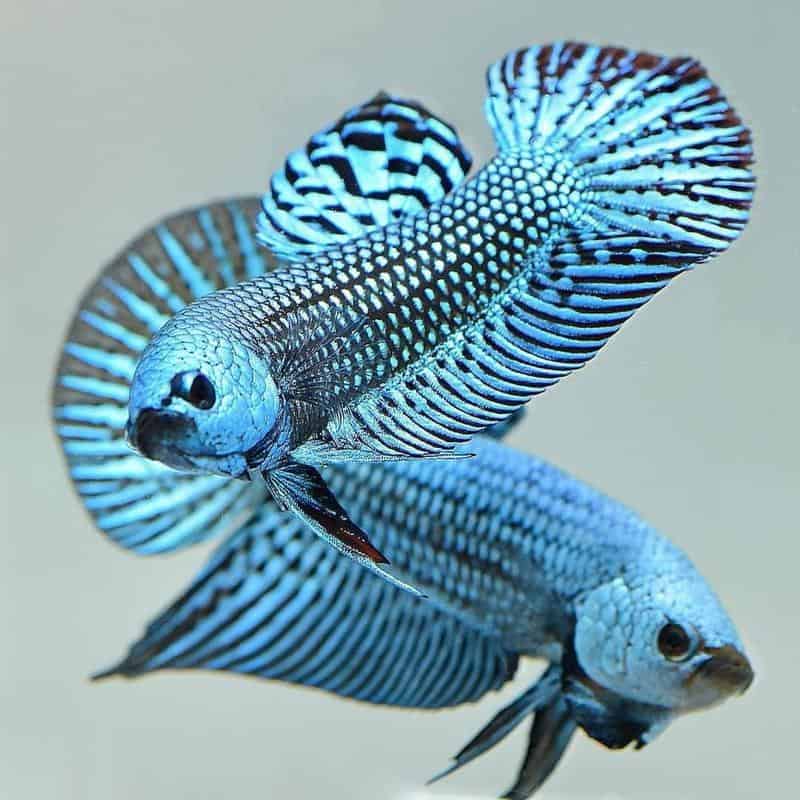
The majority of green betta are of consistent solid colors; however, a few also come in different markings. There are a variety of colors available, ranging from dark green to teal.
There is a metallic sheen that surrounds the pigment of the body, which is a trait among many varieties of betta fish having green bodies. It enhances the betta’s beauty.
7. Purple Betta

It’s hard to come across purple-colored fish because they’re one of the rarest varieties. Additionally, it is one of the highest-priced species.
Bettas having purple bodies are commonly found in the mauve to the blue color spectrum, including variants in bronze and black. Additionally, it’s normal to discover bettas having purple bodies and different-colored dorsal fins and tails.
8. Clear/Cellophane
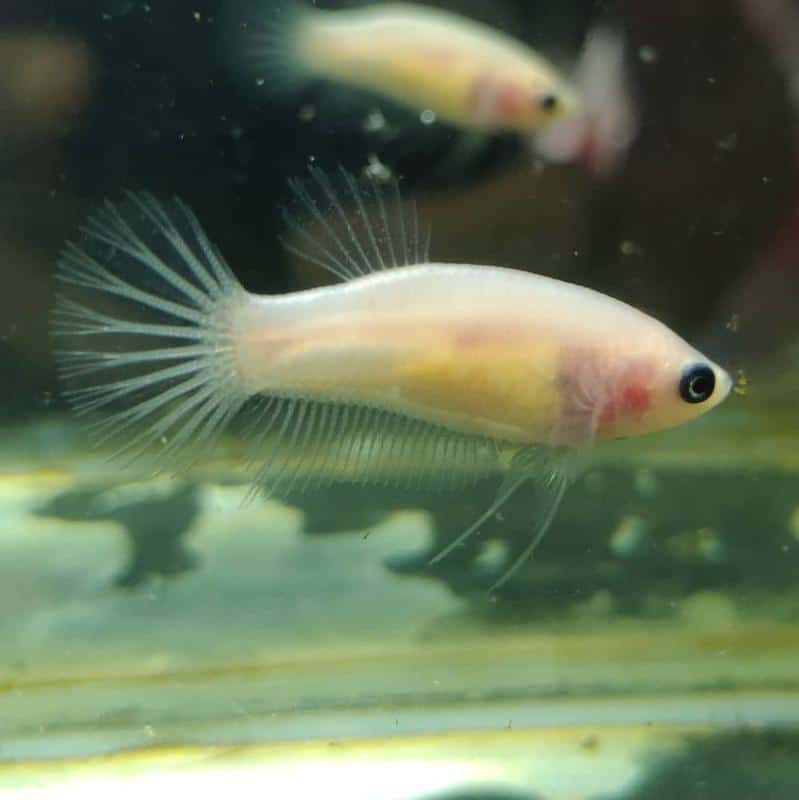
Clear bettas possess transparent skin, which sets them apart from albino bettas. They lack any noticeable coloration.
You’ll see a little pink tint in transparent bettas. However, it is not due to skin pigmentation. It is the organ’s pink color that shows up through its transparent body.
Patterns
In addition to colors, betta fish are distinguished by their patterns. Bettas’ bodies and tails are colored in different patterns, which makes them more appealing as they travel in a tank.
1. Cambodian Betta
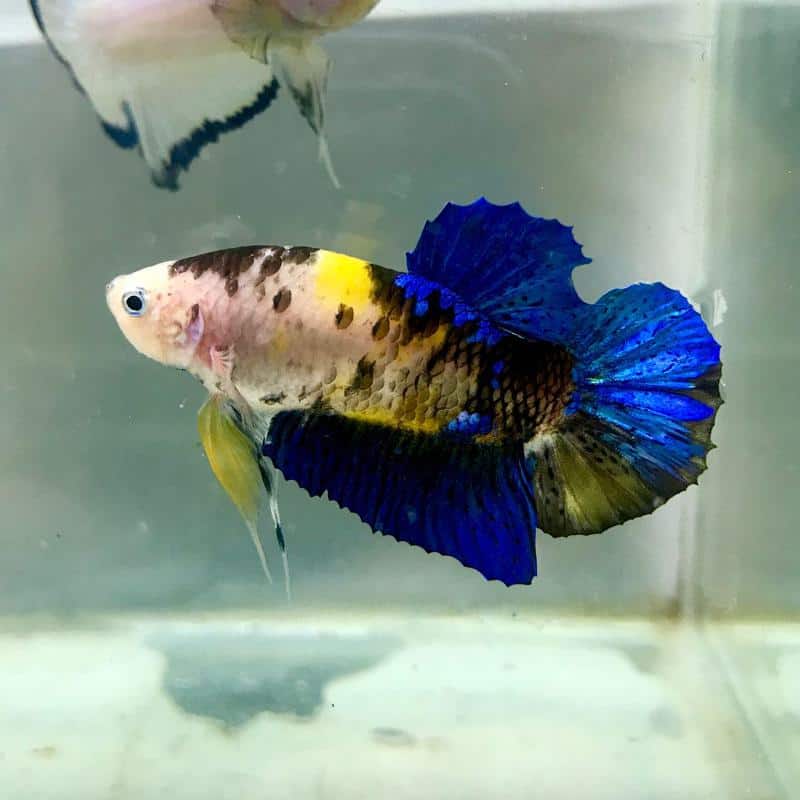
Cambodian species were created by a thorough genetic selection of light-colored bicolor betta fish.
The species has brilliant red gills that extend out from a pale pink torso. The body can occasionally appear more flesh-toned than pinkish.
Red might not always be the predominant tint in Cambodian. However, it isn’t very common. But in order to formally use the Cambodian title, the central body must maintain its light pink tint.
They are not quite as common because this species is usually young.
2. Dragon Scale Betta
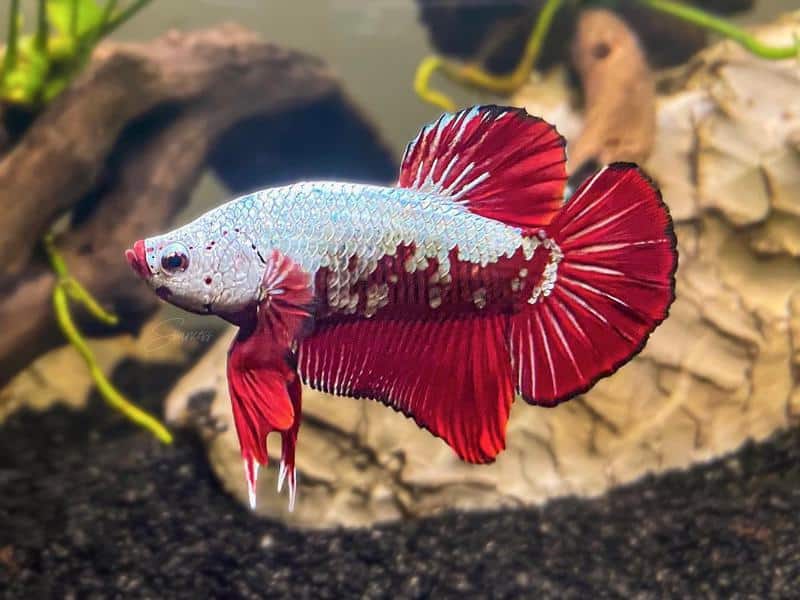
Dragon scale fish is among the most latest species of betta. In order to locate one, you may have to contact a skilled breeder.
Iridocytes have an important role in this kind of fish, enhancing the metallic appearance of their scales. Dragon scales are vibrantly colored, with noticeable glittering plates.
They have a flank design that looks like lizard scales, which gave them their title.
They distinguish themselves from the group because their scales are bigger than those of the majority of other freshwater fish species.
3. Butterfly Betta
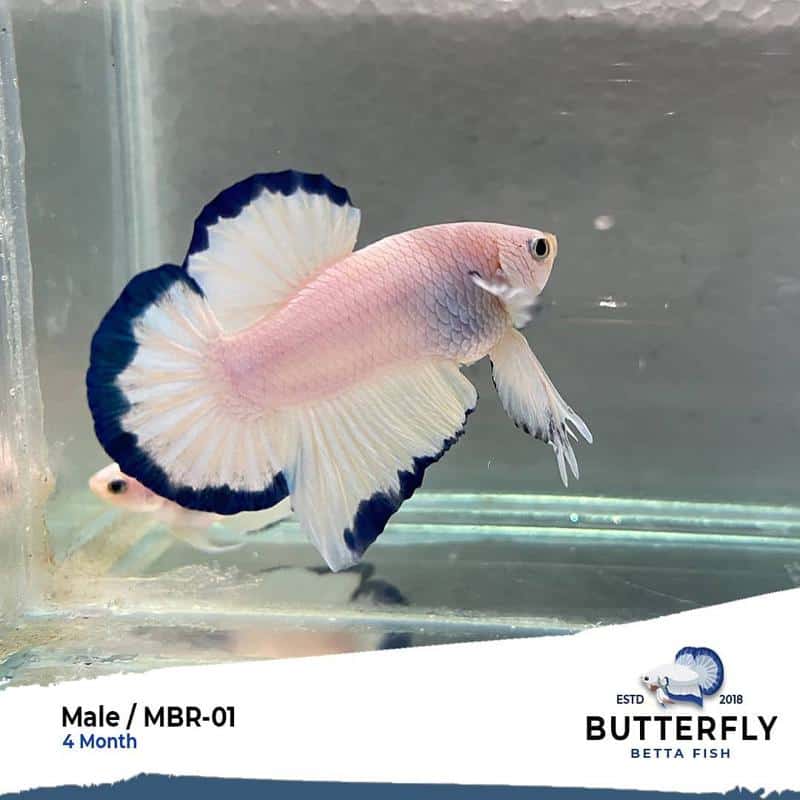
A butterfly fish’s design resembles the flapping wings of a butterfly. It is among the most attractive freshwater fish species, particularly when traveling elegantly.
A single shade dominates the body and gills of this species of betta before gradually fading away. The exterior gills feature a different tint, while the borders are white. The superior-quality betta fish having a butterfly design features a second shade of color in the middle.
4. Marble Betta
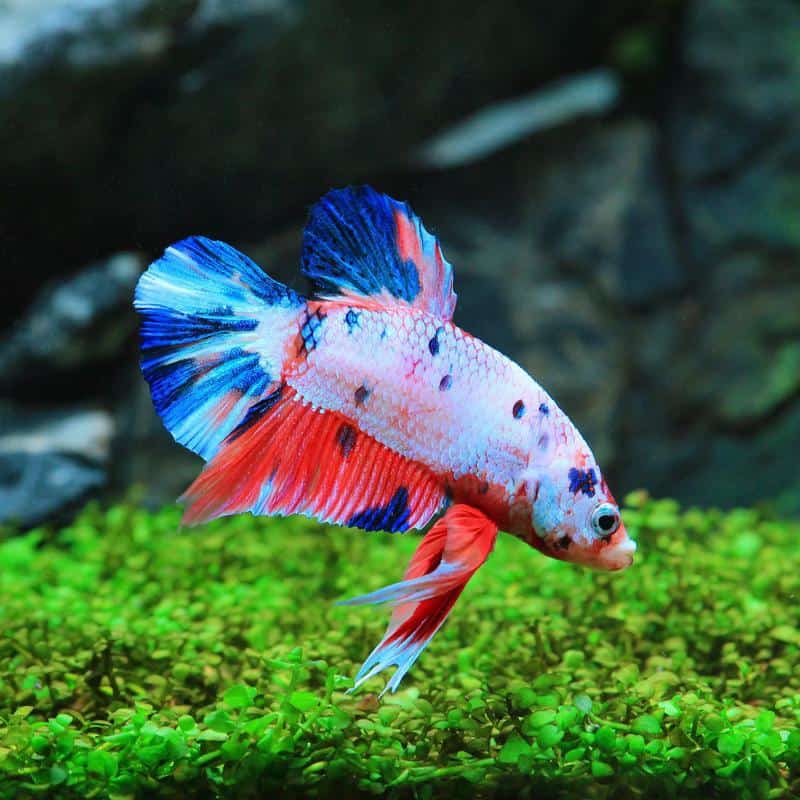
Marble bettas are distinguished by their strikingly colorful splotch-like markings, which appear on their bellies, tails, and gills. Marble fish often features a light-colored belly with black marble striping, which is typically one strong tint.
Most intriguingly, Marble fish don’t have their marble markings from birth; instead, they acquire them when they grow older, and it’s common for their design to modify multiple times over the course of their lifetime.
5. Dalmatian Betta
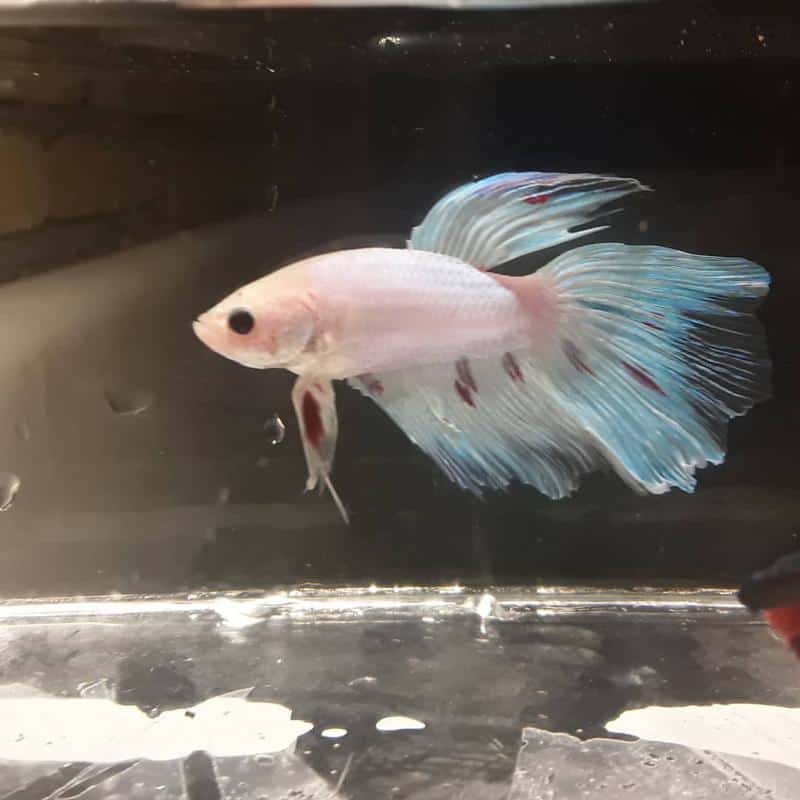
A Dalmatian fish features color dark spots that are sometimes a blend of reddish color and tangerine or cyan and white, making it among the coolest betta markings. It resembles marble freshwater fishes, but the markings seem to be more evident.
Although there are several varieties, a bright red Dalmatian is among the most difficult to acquire. Its limbs are covered with reddish-orange dots and have a light orange belly.
Also Read: Coolest Freshwater Fish
6. Bicolor Betta
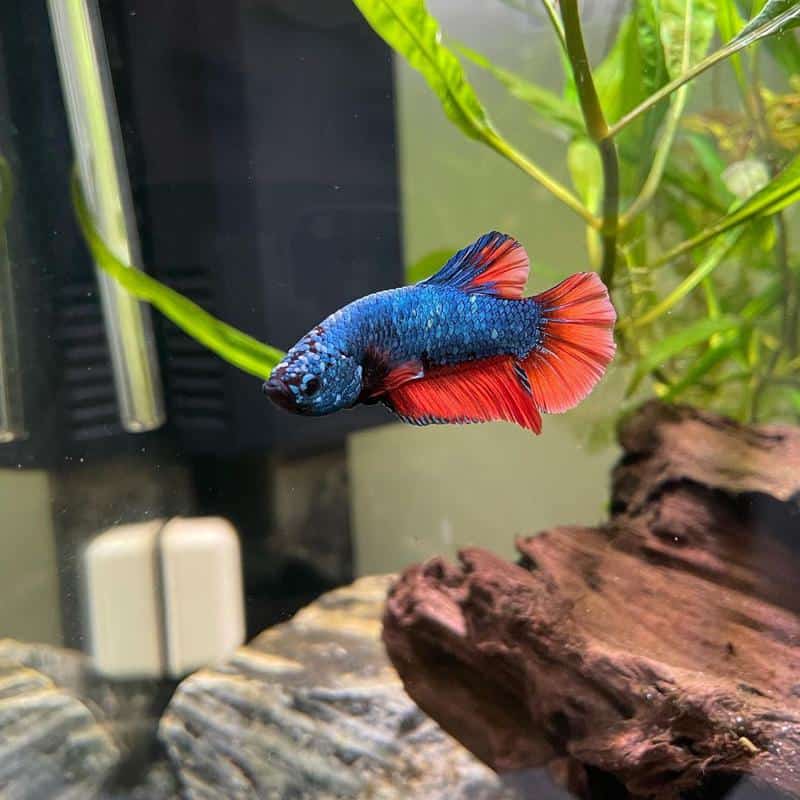
You can guess the appearance of this fish by its title. Bicolor bettas have gills and bodies that both have different colors.
The betta simply has to have two primary colors in order to be considered a bicolor. If a betta has more than two colors, then it can not be called a bicolored fish.
Also Read:
- Can Betta Fish Live Together?
- Can Betta Fish Live with Goldfish?
- Betta Fish Popeye: Early Signs, Treatment, & Care
- Why Is My Betta Fish Turning White (Losing Color)?
- Koi Betta Fish: Care & Types Guide
- How to Breed Betta Fish?
- Best Water Temperature for Betta Fish
- How Often & How Much To Feed Betta Fish?
- How to Set Up A Betta Tank?
- Types of Guppies
FAQs
What Type of Betta Is the Least Aggressive?
Due to their lack of fighting genes, wild bettas are often the least violent. Aggression tendencies are primarily determined by the fish’s personality rather than the exact kind.
How Do I Identify the Betta Type?
To determine what breed of betta fish you own, you must first recognize its tail variety and color sequence. These two characteristics could be incorporated to give your pet a name.
What Is the Rarest Betta Color?
The albino betta is among the most difficult to find fish because it lacks color.
It is quite difficult to breed these species since they frequently experience several health concerns and complexities. In fact, breeding albinos intentionally is regarded as inappropriate since it is a careless act to breed a fish that is prone to have many health problems. Other rare colors are solid purple, chocolate, and orange.
Can I Put Two Betta Fish in A Single Tank?
You can only keep bettas based on gender rather than the total number. Since males would attack each other; therefore, you can maintain a single male in your house tank. Now you will get why they are named Siamese battle fish.
They have many hideaways in their natural habitat so several males can survive together. However, in your house tank, fighting would continue till one of them kills the other.
On the other hand, females are somewhat more understanding of one another. If there is enough space, several females can live together. But, if the aquarium gets overcrowded, females could also start becoming extremely territorial.
You should never combine males and females in a single tank apart from the mating process.
Conclusion
Now you have all the information regarding different tail and color patterns. Choosing the one that is best for you might be challenging when there are so many options available.
Please consider estimating your budget, the water quality in your area, and your preferred gender while selecting betta fish.
Due to their widespread attractiveness, these species have been reproduced over many years to provide a diversity of unique and mesmerizing variations.
While various species might be more susceptible to health concerns due to genes and tail shapes, working to keep your aquarium comfortable and hygienic would help a lot in improving the health and lifespan of your betta. Feeding a high-quality pellet would also help maintain their color bright.
Any dedicated freshwater fish caretaker who wants to stay updated will have to keep researching and looking for new coloration or fin styles that might exist, as this is a rapidly growing and creative sector.
